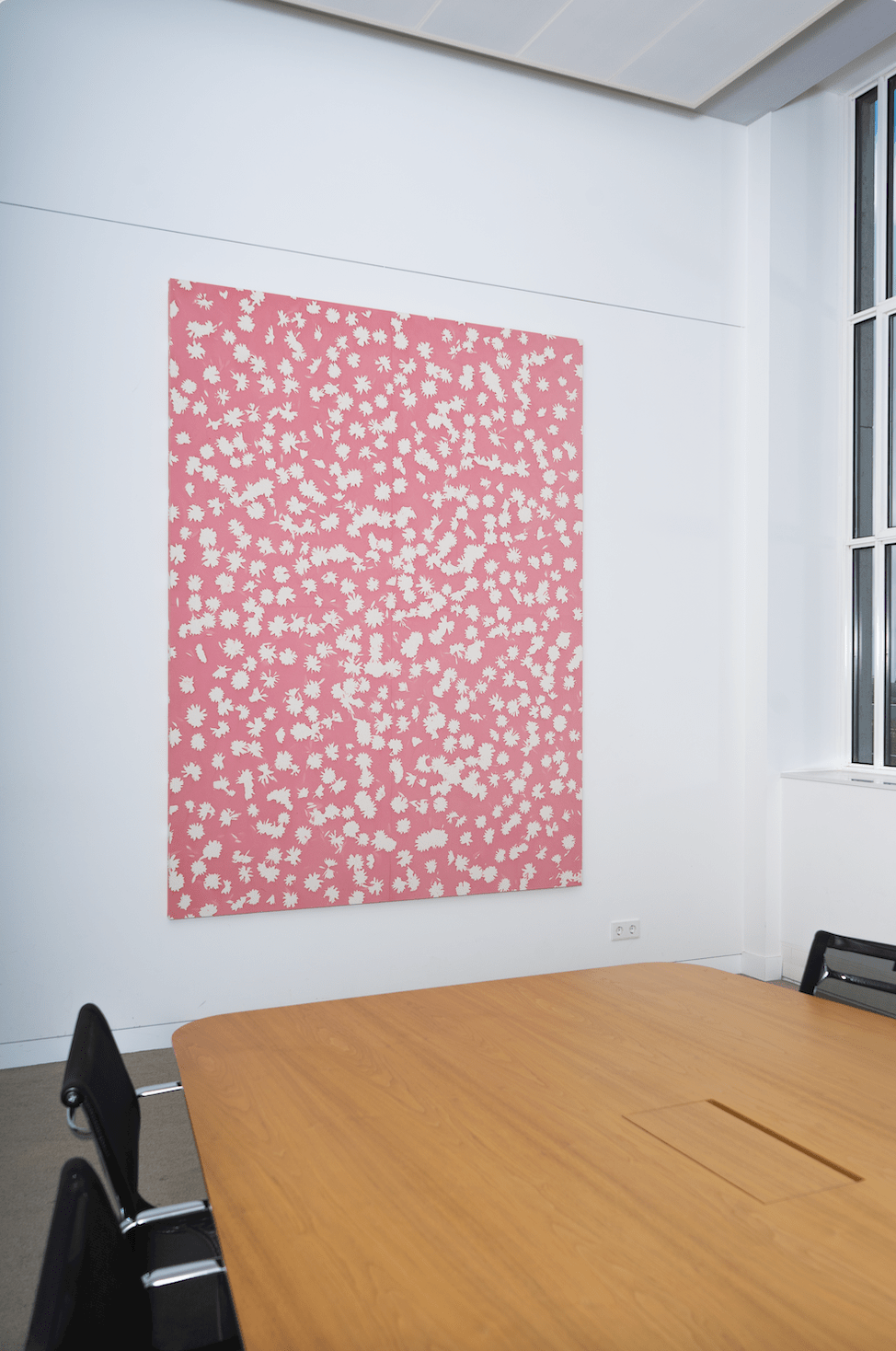

Kyle Thurman (b. Untitled (108 West 28th Street, New York, NY 10001))
Untitled (108 West 28th Street, New York, NY 10001

Anyone familiar with the now-classic paintings of the Dutch artist Daan van Golden will experience a “eureka moment” when confronted with Kyle Thurman’s “flower pigment paintings”. Van Golden’s similar floral motifs on paintings, screen prints and his quasi-abstract photographs of Cape Violets now adorn the walls of many Dutch museums. A fun fact is that, despite the fact that the theories and techniques of the two artists are miles apart, the young Thurman is a great admirer of senior artist Van Golden.
Thurman is a somewhat elusive and mysterious figure. In addition to being a filmmaker and photographer, he is now also a painter. An integral part of the art scene of young and newly emerging talented American artists, he is often asked to curate small exhibitions in trendy spaces.
Thurman has quickly established himself on the scene with paintings made with pollen and (artificial) pigments from flowers and plants. The paintings are part of an ongoing project centred on the artificial colouring of natural flowers. For years, Thurman has been fascinated by the fact that growers add pigments to flowers to intensify their colours, seemingly to surpass Mother Nature. This often happens with the cheap bouquets sold at petrol stations or supermarkets. Thurman asks himself the essential questions: why would we artificially change a naturally perfect object? What is the cultural and social relevance of these cheap flowers? And also: who buys them and why do they buy them?
Thurman’s amazement at this form of human arrogance that leads to these artificial interventions, and the fact that there’s a market for it, has led him to develop his own way of working. He boils the petals from pigmented bouquets and filters out all the colour additives afterwards. He then places the dry and colourless petals on the canvas and sprinkles the reclaimed dye across them. Thurman then removes the leaves, leaving behind the flowers as white empty space. All attention is then fully focused on the shape of the flowers and no longer on their colour. In a way, the flowers now regain their dignity. Since he paints all over the canvas and even across the edges, the floral patterns on a soft pink background are reminiscent of a piece of industrially manufactured textile, or commercially produced wallpaper.